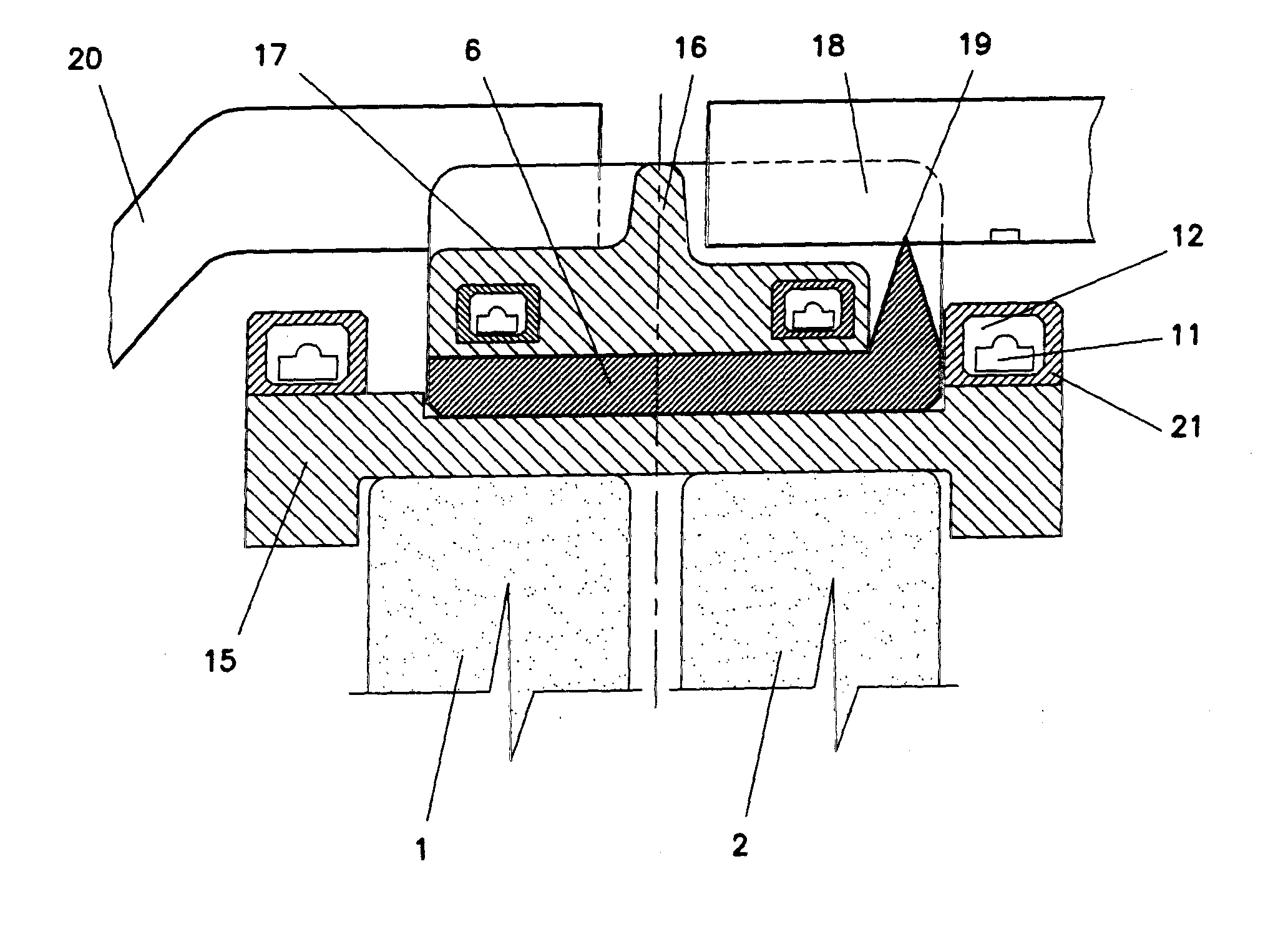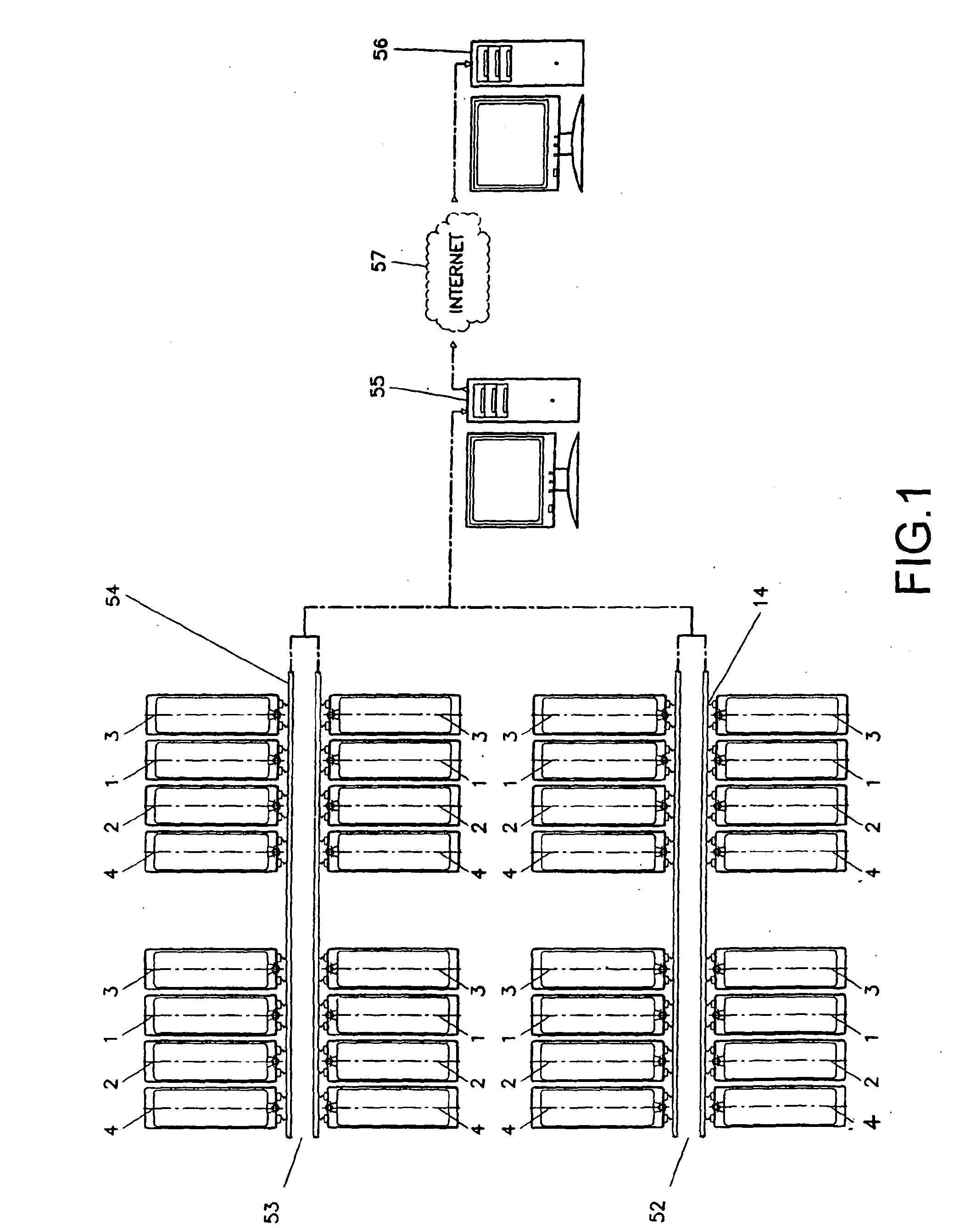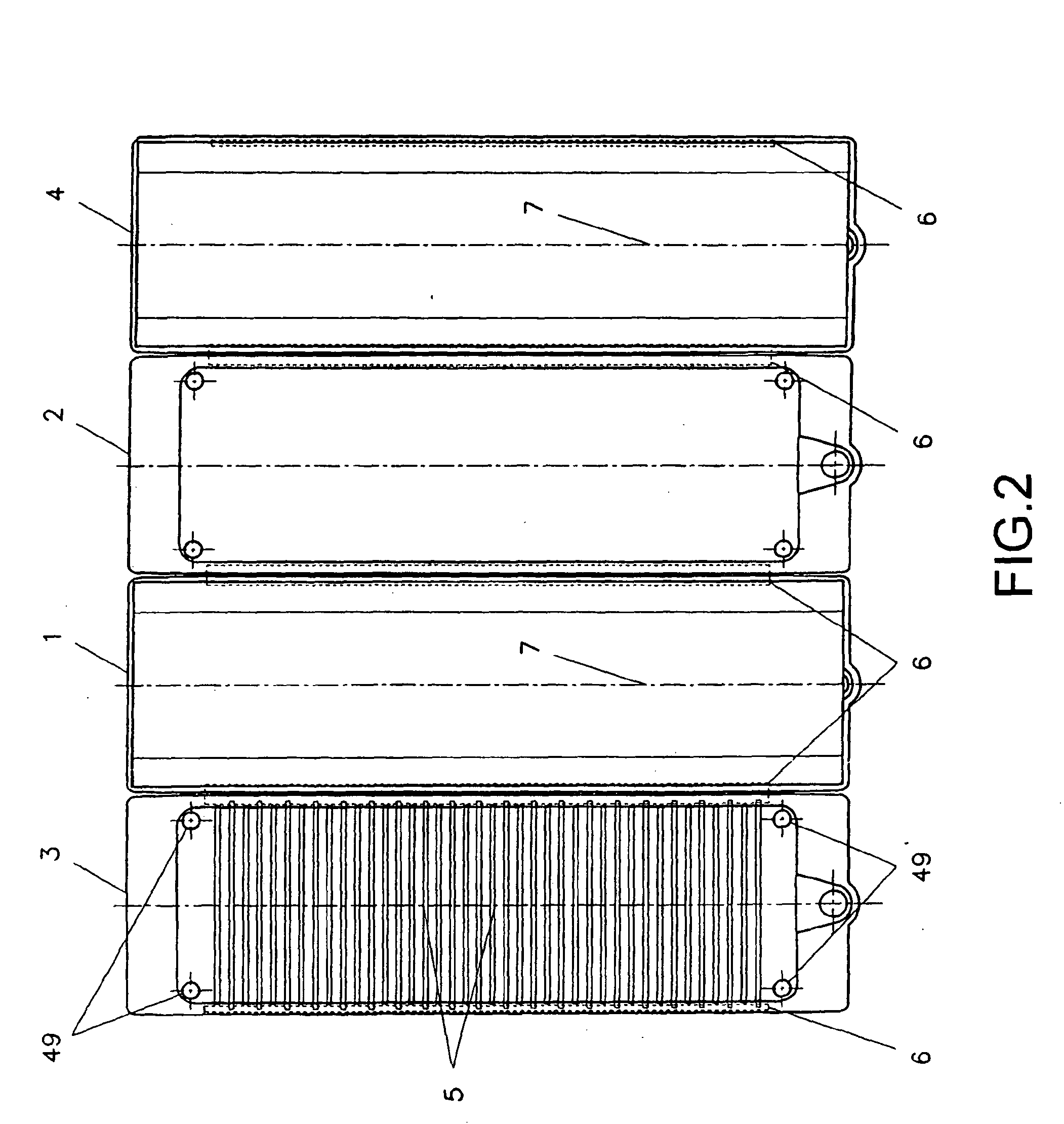System for monitoring, control, and management of a plant where hydrometallurgical electrowinning and electrorefining processes for non ferrous metals.
a technology of hydrometallurgical electrowinning and electrorefining, applied in the direction of diaphragms, electrical-based machining apparatus, electromechanical devices, etc., can solve the problems of insufficient instantaneous availability of electrodeposition on the plate, insufficient to sustain indefinitely either the continuity of the process or the resulting quality of the metallic deposit, and the volume of sulfuric acid as acid mist, which is very toxic to human health, so as to improve the capacity to manage the process
- Summary
- Abstract
- Description
- Claims
- Application Information
AI Technical Summary
Benefits of technology
Problems solved by technology
Method used
Image
Examples
Embodiment Construction
[0049]The present invention provides a system to monitor, control and operation management of a plant where industrial hydrometallurgical processes of electrowinning or electrorefining of non ferrous metals in electrolytic cells are conducted, as well as the constituent elements of such system. More specifically, the present invention refers to a system to monitor, control and operation management of the variables of said processes, and where its constituent elements to measure variables, transform them into electronic signals and transmitting same are designed to operate associated inside the electrolytic cells and their accessories in which said processes are conducted, and characterized by including internal cavities or external chambers suited to lodge circuits and / or sensors that serve as means for identification of each electrode and its position in each cell, for continuous electronic measurement in real time of the instantaneous state and the evolution in time of the variabl...
PUM
| Property | Measurement | Unit |
|---|---|---|
| current densities | aaaaa | aaaaa |
| current densities | aaaaa | aaaaa |
| current densities | aaaaa | aaaaa |
Abstract
Description
Claims
Application Information
 Login to View More
Login to View More - R&D
- Intellectual Property
- Life Sciences
- Materials
- Tech Scout
- Unparalleled Data Quality
- Higher Quality Content
- 60% Fewer Hallucinations
Browse by: Latest US Patents, China's latest patents, Technical Efficacy Thesaurus, Application Domain, Technology Topic, Popular Technical Reports.
© 2025 PatSnap. All rights reserved.Legal|Privacy policy|Modern Slavery Act Transparency Statement|Sitemap|About US| Contact US: help@patsnap.com



